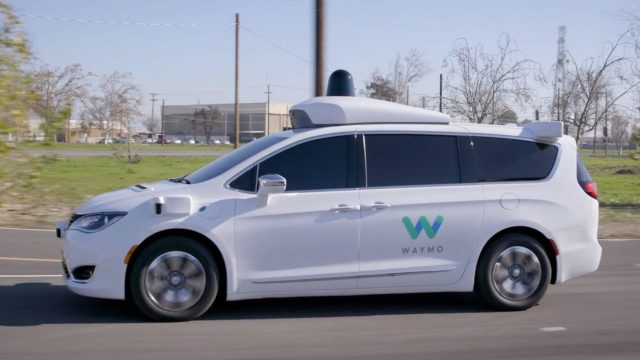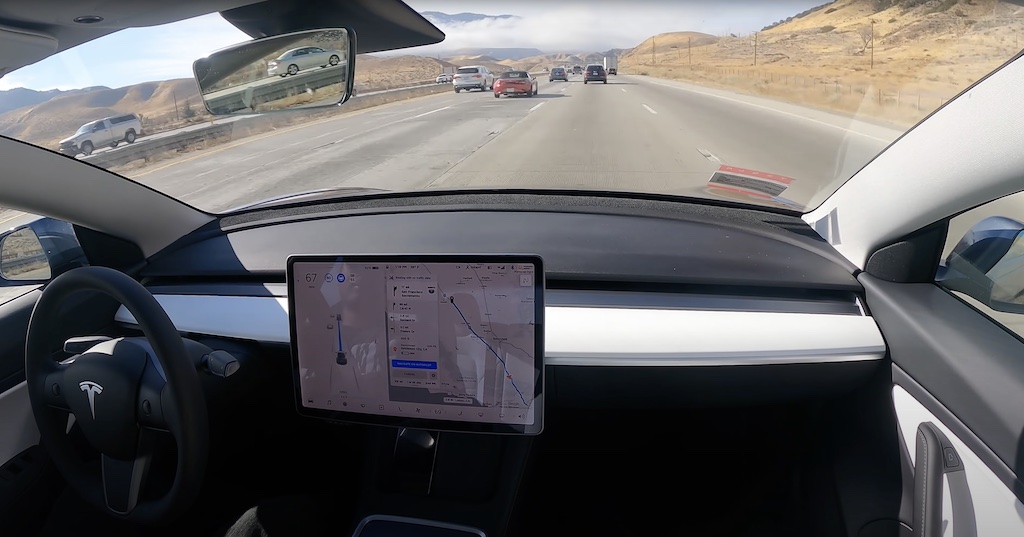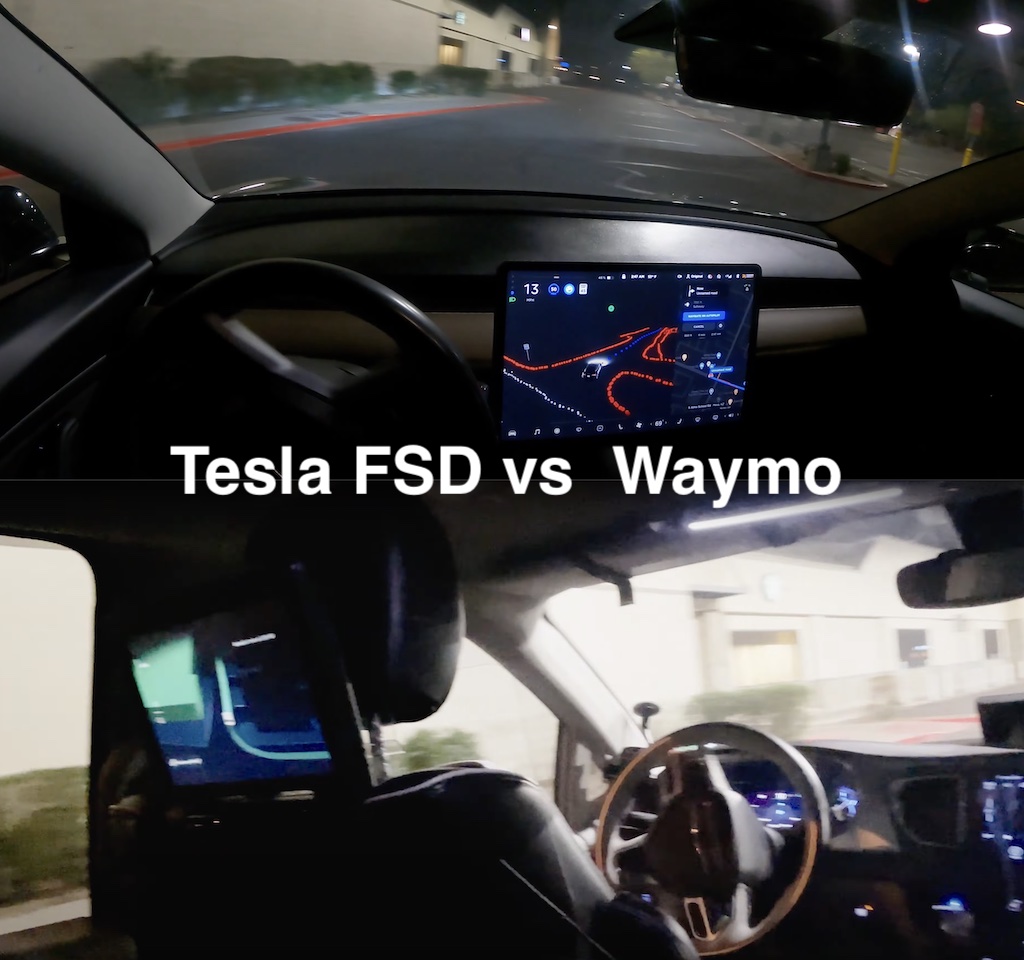YouTube channel Whole Mars Catalog posted a video comparison between Waymo and Tesla. Finally, we can compare, on the same ground, the autonomous driving capabilities of two staunch competitors who base their technologies on different ‘visions’ and approaches.
They have used a Tesla Model 3 equipped with the beta package of total autonomous driving (FSD), reserved for a small minority of beta testers in the United States.
On this occasion, the user wanted to confront in the same city, the same route aboard two fully autonomous cars.
For this, he has booked a trip in a robotaxi of Waymo, the Alphabet (Google) company that operates an autonomous system based on vision, radars, and lidar sensors, which can only function autonomously in previously mapped and digitized routes and/or cities.

Waymo’s opponent has been the Model 3 protagonist of the YouTube channel, equipped with the FSD beta software. Tesla bases its autonomous driving system on the information provided by the 8 cameras surrounding the electric car. It adds information from the front radar and proximity sensors on the bumpers.
Contrary to Waymo’s technology, Tesla does not need to digitize streets and highways for its artificial intelligence to enable autonomous driving since it adapts, in theory, to the different circumstances of life, emulating the behavior and data that any individual has a human driver.
The result of the confrontation is hopeful for the future of freeing mobility of human intervention since it shows two systems that manage to complete the journey entirely independently of the driver (in the case of Waymo, there is not even anyone behind the wheel of the car).
Destination Taco Bell
The comparative test was carried out on two destinations, on two routes. The first was destined for a Taco Bell and the second for a Safeway store. Both cars, of which only the Tesla was electric and zero emissions, completed the mission without any human intervention. In the case of Waymo, this is impossible to do since there is a safety screen that prevents the customer from accessing the driving position.

During the first test bound for a Taco Bell restaurant, Waymo’s driverless taxi left the customer on the opposite side of the road, even though the destination indicated the restaurant’s address and location. This caused the user to have to walk a bit to reach his destination.
In the same tour aboard the Tesla with beta FSD, you arrived at the restaurant’s door located on the right side of the street.
Second test
The second test was destined for a Safeway. The result was optimal but with essential differences in behavior in the direction of the vehicles’ routes.
While Waymo’s autonomous car took the longest route to reach the same destination, in total, it took 8 minutes versus 5 minutes for Tesla to use a more direct way. Both vehicles left their passenger and supervising driver (in the Model 3) on the correct side of the commercial area.
Why this difference?
As shown in the video, no traffic justifies a delay in the route in either case. However, we would have liked to see how both systems are defended with dense ‘human’ traffic.
The time difference can be given by a factor that differentiates the decision-making of autonomous driving by Tesla and Waymo.
On many occasions, it has been stated that autonomous driving does not make left turns, except at clear and specific intersections. Waymo appears to use the right-turn approach whenever possible.
This means that to exit a road to the left, sometimes the system, for safety reasons, opts to turn right (making the safer choice by avoiding cross-traffic in two directions of circulation), making right turns until reaching an intersection that allows for a more controlled left turn.
On the other hand, Tesla uses a different system, which can be seen in the first seconds of the video, where surprisingly, each car, despite starting from the same location, turns in different directions (Waymo to the right and Tesla to the left).
Tesla turns left, just after leaving the parking lot, crossing an avenue with 4 lanes (two for each direction of travel). The time differences can be explained since the route separates, offering Tesla a clear advantage in terms of travel time.

